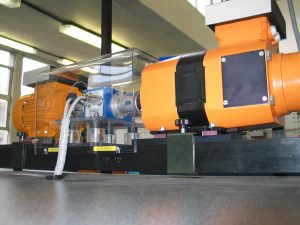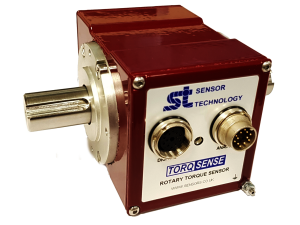The automotive sector is proving to be a powerbase for the reviving manufacturing economy. Volume car makers have full order books and specialists builders are enjoying record exports. But to maintain this vital economic activity, constant innovation is needed particularly on reducing vehicles’ environmental impact.
For two generations car ownership figures have been an indicator of a nation’s wealth. In Europe the 1950s and ‘60s saw most families get their own car; in the ‘70s and ‘80s the two-car family became the norm; the 90s saw children getting their own cars before they left home. Now in the new millennium most people change car regularly, helping keep the manufacturers busy.
 And the same development is now being seen in the newly industrialising parts of the parts of the world. Ten years ago the streets of Beijing and Mumbai thronged with bicycles, now car ownership is within the grasp of more and more of these industrious peoples.
And the same development is now being seen in the newly industrialising parts of the parts of the world. Ten years ago the streets of Beijing and Mumbai thronged with bicycles, now car ownership is within the grasp of more and more of these industrious peoples.
Last year Audi sold more cars in China than in Germany and Rolls Royce Motors’ biggest market was India; Nissan Sunderland sent most of its production overseas and announced ambitious plans for its new electric car, the Leaf. Other manufacturers have similar good news to report, plus the drive for cleaner more fuel efficient cars is driving technical developments.
“When I was a dashing young blade, owning a car was everyone’s greatest dream,” recalls Tony Ingham of Sensor Technology. “We weren’t bothered about emissions then; we craved big American cruisers and fast British sports cars, powerful German workhorses and stylish Italian screamers. But when petrol prices climbed to over ten shillings a gallon, I realised that things would have to change.”
It has taken time, spiralling costs and considerable legislation, but today’s motorists are now keen to ensure that their cars are both clean and economical. And the pressure is on to steadily reduce vehicle emissions over the coming years. Work being done in universities and research institutes is feeding into manufacturers’ own R&D departments and out onto the world’s roads at an incredible rate.
To develop new generations of high performance, low emission power plants new high capability test beds that simultaneously monitor multiple parameters have been developed.
Tony Ingham explains: “An engine’s torque is its fundamental characteristic and previous methods of measuring it are not good enough for today’s demands. So we at Sensor Technology have developed TorqSense, a non-contact digital technology that can be set up in minutes and feed straight into TorqView software to produce data customised to each job. This allows the automotive engineers to concentrate on their development work rather than having to worry about the mechanical details of running tests.
“There are some really original thinkers working on engine design these days. They need like-for-like comparisons of the performance of petrol engines, diesel engines, LPG engines, electric motors, generators and regen units. Quite simply, TorqSense is their favourite way to do this.”
Typically, a modern test bed needs to be able to monitor all rotating shafts within various hybrid configurations of IC engine and electric machine in moments. Old fashioned belt measurements and strain gauges are difficult to set up and use, whereas TorqSense is a direct in-line mount that gives plug and play levels of ease and efficiency.
TorqSense uses two tiny quarts piezoelectric combs, called Surface Acoustic Wave (SAW) devices, whose resonance frequency changes with torque. This can be measured using a wireless radio frequency coupling and instantly converted into test data.
“Motor testing is completely straightforward with TorqSense,” says Tony. Its digital signals and non-contact operation, easy set up and automatic analysis means test regimes can be executed with the utmost efficiency.”
Hybrid Lotus Blossoms
Lotus Engineering has always been at the forefront of automotive developments and has worked with Elektro Magnetix (EMX) of Brighton to develop a new hybrid power plant. Mapping the full performance range was an essential part of the project, but with a tight development timetable, testing had to be simple and effective.
Torque profiling can be a very long winded process because of the need to constantly refit and reset fiddly slip rings. Discovering TorqSense was a real boon for the project; EMX could set it up quickly, reset it at will and have half the analytical workload done automatically.
Most engineers believe that hybrid solutions are vital for short- and medium-term CO2 reductions and are assessing several variations on the basic idea to establish best in class options.
Everybody recognises the vital role of the internal combustion (IC) engine to modern life, but they also realise that emissions can be damaging to the environment. A true alternative is years away, so many other organisations are working on improving IC efficiency as much as possible.
Just down the road from Lotus’s Norfolk headquarters Powertrain Technologies Ltd has designed an intelligent engine lubrication system. This incorporates a bank of computers to control oil supply to different parts of the engine.
The system can be used on all sorts of engines, big, small; diesel, petrol; high revving or low. But each engine needs to be mapped in considerably detail over its entire performance range and in all climatic conditions. This amount of testing is of course very time consuming, so an efficient test bed design was essential.
Fortunately Powertrain found the experts at Sensor Technology early on in the project and has been able to tap into their considerable experience in the field. Their suggestions for simple in-line test bed geometries and their plug and play TorqSense technology have made a major contribution to time to market objectives.
Feel The Power
Safety is another pressing issue for automotive researchers and TorqSense is helping to reduce driver fatigue by improving power steering technologies. It forms the basis of a highly automated test cell at a Tier 1 supplier and checks nearly 200 systems an hour.
A robot loads electrohydraulic motors into the test cell and after testing transfer them to either an exit conveyor or, in the event of a failure, to a secure holding area. However, it was realised that with the rapid throughput, losses could build up between the dynamometer and hysteresis brake of the cell and the motor under test. Sensor Technology was approached to see if it could suggest a solution.
Tony again: “The robot’s access requirements dictated that more space than normal was needed between the dynamometer and brake, leading to a relatively long connecting shaft and coupling. This was where the losses were going to accrue, so we suggested the elegantly simple solution of fitting a TorqSense in there to regularly and automatically check the torque inherent in the system.
“We set up the software to compensate the data output for the measured amount of ‘offset’. This means a test sequence can be carried out quickly and efficiently. We also separately highlight the offset measurement so that the test engineers can make adjustment before things go out of tolerance.”





